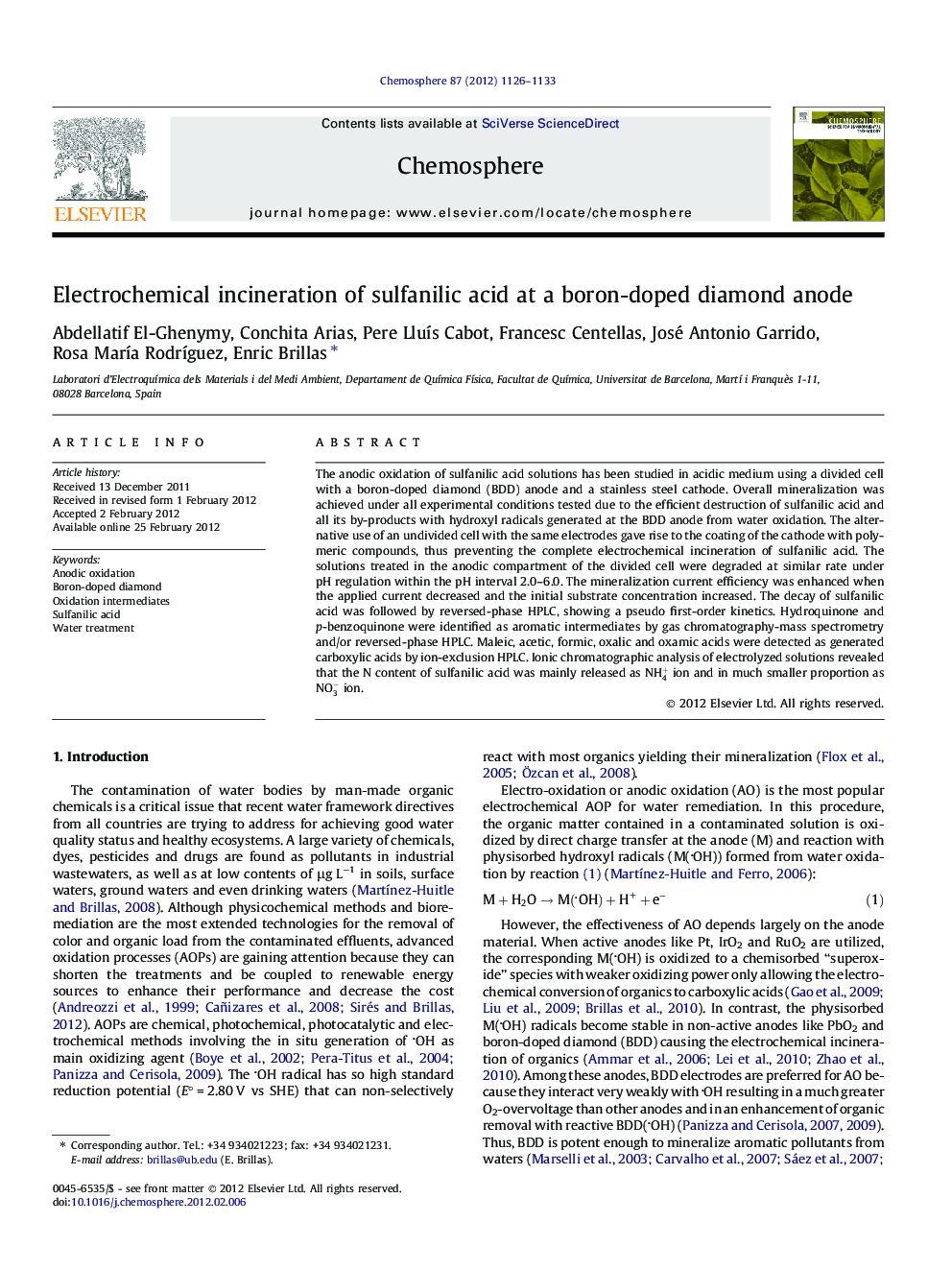| کد مقاله | کد نشریه | سال انتشار | مقاله انگلیسی | نسخه تمام متن |
|---|---|---|---|---|
| 4410095 | 1307529 | 2012 | 8 صفحه PDF | دانلود رایگان |

The anodic oxidation of sulfanilic acid solutions has been studied in acidic medium using a divided cell with a boron-doped diamond (BDD) anode and a stainless steel cathode. Overall mineralization was achieved under all experimental conditions tested due to the efficient destruction of sulfanilic acid and all its by-products with hydroxyl radicals generated at the BDD anode from water oxidation. The alternative use of an undivided cell with the same electrodes gave rise to the coating of the cathode with polymeric compounds, thus preventing the complete electrochemical incineration of sulfanilic acid. The solutions treated in the anodic compartment of the divided cell were degraded at similar rate under pH regulation within the pH interval 2.0–6.0. The mineralization current efficiency was enhanced when the applied current decreased and the initial substrate concentration increased. The decay of sulfanilic acid was followed by reversed-phase HPLC, showing a pseudo first-order kinetics. Hydroquinone and p -benzoquinone were identified as aromatic intermediates by gas chromatography-mass spectrometry and/or reversed-phase HPLC. Maleic, acetic, formic, oxalic and oxamic acids were detected as generated carboxylic acids by ion-exclusion HPLC. Ionic chromatographic analysis of electrolyzed solutions revealed that the N content of sulfanilic acid was mainly released as NH4+ ion and in much smaller proportion as NO3- ion.
► Total mineralization of sulfanilic acid using a divided cell with a BDD anode.
► Independence of degradation rate and mineralization degree with pH in acidic medium.
► Greater mineralization current efficiency with more substrate content and less current.
► Hydroquinone, p-benzoquinone and maleic, acetic, formic, oxalic and oxamic acids as intermediates.
► Release of initial nitrogen as ammonium ion and in much lesser extent as nitrate ion.
Journal: Chemosphere - Volume 87, Issue 10, June 2012, Pages 1126–1133